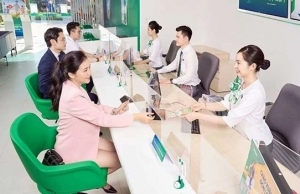Readying infrastructure for green growth resilience
 |
| Eric Johnson (left) and Duong Bao Trung Freshfields Bruckhaus Deringer LLP |
To facilitate private investment into renewable energy projects, the government will need to provide more certainty around the well-known issues of project risk-sharing and economic returns. Despite the welcome release of the PDP8, investors are still waiting for the government to issue a plethora of implementing regulations and guidance to put the PDP8’s policy goals into action, without which most investors will have no choice but to continue to wait on the sidelines.
One of the most prominent examples of infrastructure issues that are standing in the way of Vietnam’s policy goals is the current state of the power transmission system. Currently, the system does not have the capacity to bring online not only new renewable energy generation, but even existing solar plants that have already been built.
It is clear that in order to realise the government’s renewable energy goals as expressed in the recently released PDP8, the modernisation of the power transmission system to both accommodate new renewable inputs and increase the ability of the system to transport electricity over long distances should be of the utmost priority.
Private investment has an important role to play in this process, and although steps have been taken to facilitate this, to date too many uncertainties remain for investors to take the plunge.
Another key component of green development that the government has prioritised from a policy perspective, but where more work can be done is energy efficiency. Vietnam continues to experience rapid urbanisation characteristic of fast-growing emerging economies. This trend presents both a challenge and an opportunity to develop urban areas to accommodate surging populations in an economically feasible way, but also in a sustainable and energy-efficient manner.
As of the end of the second quarter of 2023, it was reported that Vietnam has nearly 300 green buildings certified to international standards and ranks 28th globally in terms of LEED-certified buildings.
This is a significant achievement, especially if you compare Vietnam’s ranking to the size of its economy globally, but the number remains small in the context of all the new construction projects coming online. There is clearly more work that can be done on this front.
An open and predictable investment environment will convince foreign investors to make long-term investments in sustainable infrastructure in Vietnam. Unclear regulations and unpredictable bureaucratic procedures may convince them to look elsewhere.
Most investors understand that sensitive sectors such as construction and clean energy will be subject to strict regulatory oversight – this is true for most countries. However, the real issue today in some of these areas is that it is often unclear how to resolve the complexity of certain procedures without additional guidance from the government, or unclear how to proceed with certain types of projects at all.
In addition, in order to attract foreign investment into long-term infrastructure projects, there must be certainty around issues like risk-sharing and economic returns; otherwise foreign investors will be unable to deploy capital to support the country’s sustainable development.
As noted, the issuance of the PDP8 was a welcomed development for foreign investors because it provides a high-level indication of where the government wants to take the country in terms of power development in the coming years. However, there remains much work to be done to implement its policy goals, without which most foreign investors will be unable to deploy capital.
For example, guidelines are urgently needed for the development of rooftop solar projects, including clearer procedures for obtaining required permits and other legal documents as well as a legal framework for connecting such projects to the national grid.
Offshore wind, a major opportunity for Vietnam given its long coastline, suffers from many unresolved uncertainties such as economically viable feed-in tariffs (FiTs), risk-allocation in power purchase agreements and a number of licensing issues around allocating water surface rights to foreign investors.
Perhaps even more so than renewable power generation projects, participation of foreign investors in developing the power transmission grid in Vietnam remains more of a theoretical possibility than a reality that interested foreign investors can start planning for now.
It is true that in an effort to improve energy quality and transmission capability, the government amended the Law on Electricity in 2022 to allow private investors to invest in national power grid development for the first time.
Since the amendments, stakeholders, including foreign investors, have been waiting for further guidance from the authorities on how grid development projects can proceed.
For example, it currently remains unclear whether investors can construct the grid by themselves or only through a joint venture with Vietnam Electricity (EVN), whether market access conditions for foreign investors will be imposed, and if so, what the conditions will be, and how private investors will cooperate with EVN, which has to date managed the power grid itself.
Energy-efficient construction represents a huge opportunity for foreign investors in Vietnam as well as Southeast Asia more broadly. Continued refinement of existing incentive schemes and the implementation of new national and provincial level policies to incentivise and promote energy-efficient construction will be an important catalyst in attracting foreign developers with the relevant expertise and engaging sources of green financing for such projects.
In order to incentivise foreign private investors to finance sustainable infrastructure projects in Vietnam, economic returns and investment protections are key. Vietnam itself triggered 18GW of solar capacity several years ago with generous FiTs.
A key non-Vietnamese example of this dynamic in the region is Taiwan, which deployed a strategy of offering generous FiTs for offshore wind projects to jumpstart the industry in the country and has since been bringing them more in line with other power sources to account for lower operating costs (in theory) of offshore wind in Taiwan, because of established economies of scale and developed supply chains.
On the other side of the equation are investor protections and risk allocation. In order for foreign investors to finance large-scale infrastructure projects, most must turn to lenders who, unlike investors, are much less risk tolerant. This is the bankability issue that hampers successful implementation of many public-private partnership (PPP) projects in Vietnam. The key issues here are well known, and include protections around termination risk, change in law, and others.
Several other countries have demonstrated the effectiveness of the PPP model in Asia, namely China and India. There are also numerous development finance agencies in Vietnam supporting the development of bankable PPPs.
For power transmission grid development, most of the investments into these networks in Southeast Asia have been financed by public funds, so there are fewer precedents that the government can refer to for guidance.
The dearth of precedents in the region for this type of investment provides Vietnam with the opportunity to lead the way in the ASEAN region in developing workable business models that successfully entice private funding into this critical sector.
For energy-efficient construction, Vietnam should continue to incentivise this type of construction through national and provincial planning. Singapore provides a clear example of the success of this approach through the implementation of its Green Mark scheme which, according to the Singapore Building and Construction Authority, has resulted in close to 55 per cent of Singapore’s buildings having been “greened” in accordance with the terms of the scheme.
 | Green growth topping the agenda for investment push Green growth and investment are in a fierce race that has been going on quietly for many years, but it is now speeding up to enable Vietnam to reach its committed goals. |
 | More incentives needed to support green credit: Experts Experts have shared a view that green credit and green growth play an important role in implementing the National Green Growth Strategy in the 2021-2030 period with a vision until 2050 as they create resources for environmentally-friendly projects and programmes. |
What the stars mean:
★ Poor ★ ★ Promising ★★★ Good ★★★★ Very good ★★★★★ Exceptional
Related Contents
Latest News
More News
- Driving double-digit growth through green and circular transformation in Vietnam (December 17, 2025 | 09:00)
- Standard Chartered and ACCA deepen collaboration to develop Vietnam’s talent for a sustainable future (December 15, 2025 | 18:18)
- Schaeffler reports strong early output from Dong Nai solar project (December 12, 2025 | 15:16)
- Forestry conference highlights biodiversity and sustainability goals (December 09, 2025 | 13:35)
- Home Credit honoured among top 10 sustainable companies in trade and services (December 09, 2025 | 12:18)
- SCG and seven member companies honoured in Top 100 Sustainable Businesses 2025 (December 08, 2025 | 09:00)
- Nestlé Vietnam pioneers sustainable development and promotes business connections (December 06, 2025 | 12:09)
- CSI 2025 highlights rise of Vietnam’s green champions (December 06, 2025 | 09:00)
- Acecook Vietnam named among top 100 sustainable businesses (December 06, 2025 | 08:00)
- Vietnam’s forest carbon credits draw global interest (December 05, 2025 | 17:41)

 Tag:
Tag:





















 Mobile Version
Mobile Version